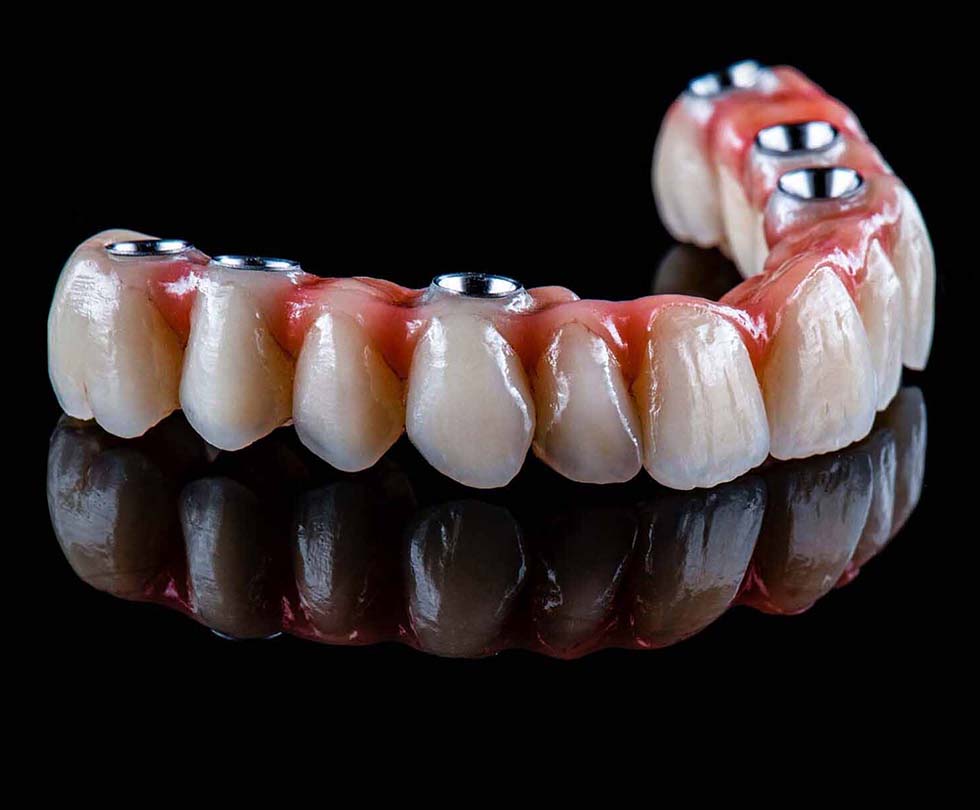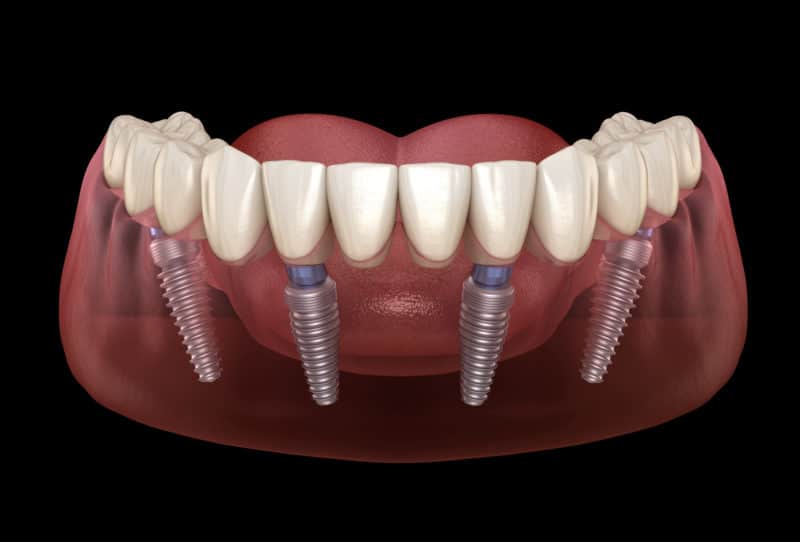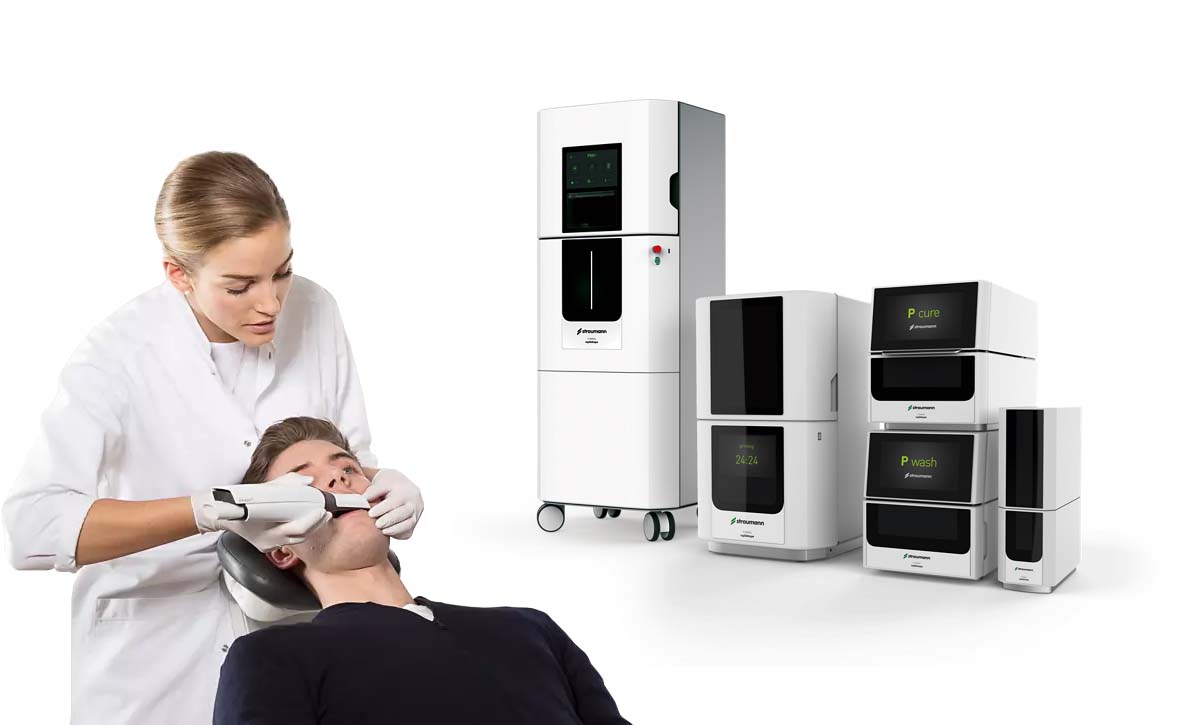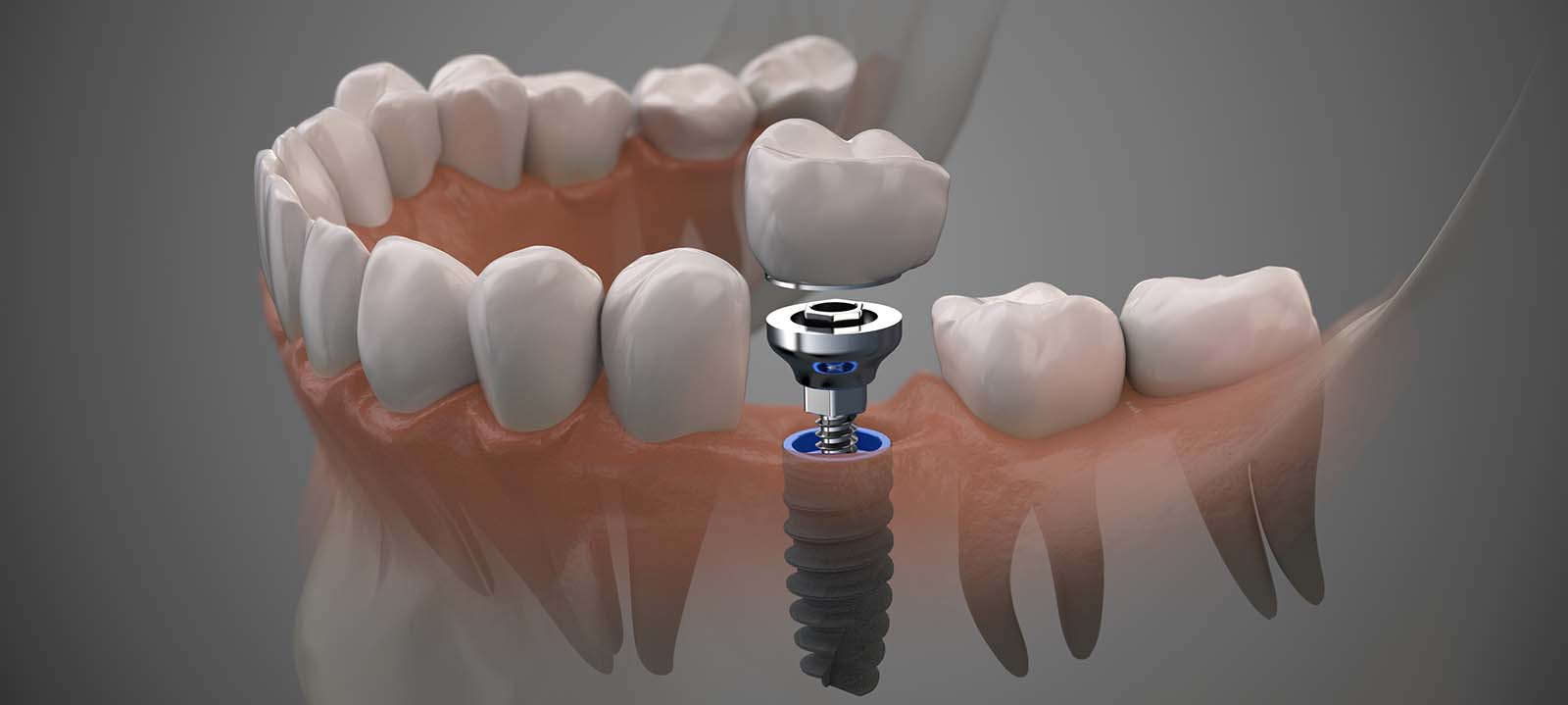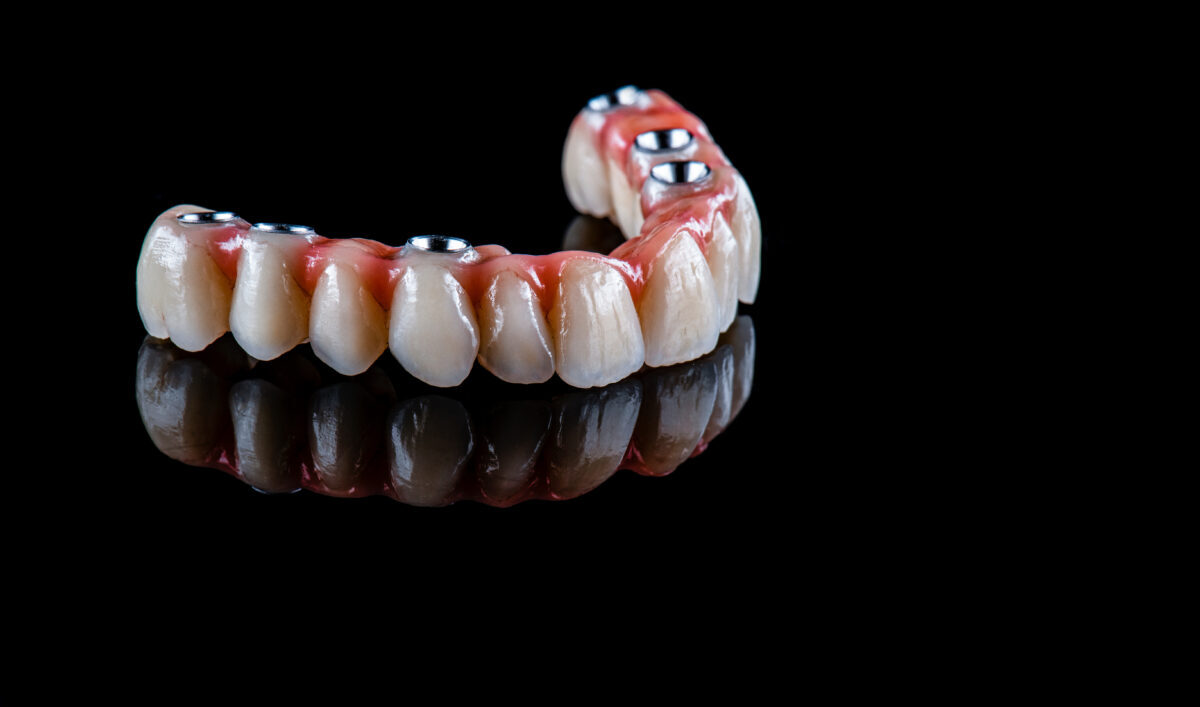Do you have one or more missing teeth, badly damaged or decayed teeth, or an unwillingness to wear dentures? If so, getting a full set of dental implants may be a solution to replace all your teeth with implants. Missing teeth can alter your facial shape by throwing your bite out of alignment. They may also make you feel self-conscious about your smile. new dental implants are artificial root systems that are surgically implanted into the jawbone. They can replace not only the natural teeth but also the roots of the teeth.
A full set of dental implants are also an ideal solution for people who have lost all their teeth. This gives them an option to replace all your teeth with implants.
The procedure involves placing a metal screw into the jawbone and attaching artificial teeth. After several months, the bone around the implant grows, securing it in place. The replacement teeth are then attached to the implant, covering the gap. The new dental implants are solid and durable, making them a good option for people who want to regain their smile with confidence.
See also: Best periodontist in Los Angeles
What are Whole Mouth Dental Implants?
This procedure is an alternative to clear choice full mouth dental implants to other treatments, such as dentures. People who have lost most of their teeth can get full mouth dental implants to restore their smiles. Full mouth implants are composed of a set of implants embedded in the jawbone and a set of outer teeth.
The two most common types of full mouth implants are implant-supported dental bridges and implant-supported full dentures. Both types are available in fixed and removable forms. You may choose to replace one tooth with one dental implant or all or most of your teeth with a full mouth dental implant. When you need to replace missing teeth, these whole mouth dental implants are an alternative to dentures so you can eat and speak more comfortably. Full mouth dental implants can support a full set of dentures and can be used to replace one or more teeth. Depending on how many teeth you wish to replace, the type and scope of the procedure will vary.
Types of Dental implants
Dental implants can be classified into two types:
-Endosteal (in the bone) The most common type of full denture implant is the endosteal implant. In most cases, they look like small screws. Endosteal implants are made from materials that are safe for the body, such as titanium.
Endosteal implants are surgically placed deep inside the jawbone as an alternative to tooth roots. It is possible to anchor one or more teeth with one implant.
-Subperiosteal (on the bone) This type of implant is used when there is not enough healthy jawbone to anchor an endosteal implant.
The subperiosteal implant is inserted under the gum without drilling into the jawbone. Instead of being inserted into the bone, they are placed above or on it.
Dentures with implants Options
Implants can be used to replace multiple or all missing teeth, such as All on 4 implants and the same-day full mouth dental implants.
All on 4 Dental Implants
All on 4 dental implants make it convenient to replace missing teeth without requiring separate implants for each tooth. With all on 4 dentures instead of four implants, you get to replace all your teeth. In just one day, you can have a radiant new smile!
Same Day Full Mouth Implants
Same-day dental dentures with implants allow you to get replacement teeth right away instead of waiting months. The jawbone normally has to heal for several months before the implants fuse with it with traditional implants.
Full arch Dental Implants
Full-arch implants replace an entire arch of missing teeth with 4-6 dental implants. As soon as these implants have healed, your dentist will make you a set of removable or permanent implant-supported dentures.
Unlike traditional dentures, full arch dental implants do not move or shift, and they feel and look completely natural. The full-arch implant also strengthens and protects your jaw bone, protecting it from bone resorption after tooth loss.
What you can expect
Dental implant surgery usually occurs in an outpatient setting, performed in stages, with healing time between procedures. The process of placing a dental implant involves multiple steps, including:
-Removing damaged teeth
-Preparation of the jawbone (grafting), if necessary
-Placement of dental implants
-Growth and healing of bone
-Abutment Artificial tooth placement
The entire process takes many months to complete. During this time, your jawbone grows and heals. In certain situations, depending on the procedure or materials used, some steps can be combined.
Dental Implants: Preparation
Since dental implants involve one or more surgical procedures, several specialists may be involved in planning dental implants, including:
-A physician specializing in jaw, mouth, and face conditions,
-A dentist who deals with structures that are supportive of teeth, such as bones and gums (periodontist),
-A dentist specializing in the design and fitting of artificial teeth (prosthodontist),
-Occasionally, an ENT (ear, nose, and throat) specialist is needed.
Since dental implants require one or more surgical procedures, a thorough evaluation is necessary to prepare for the procedure. This will include sedation, local anesthesia, or general anesthesia to control pain during surgery.
Consult your dental specialist about the best option for you. If you have general anesthesia, your dental staff will inform you about what you can eat and drink before your surgery. In case of sedation or general anesthesia, arrange for someone to drive you home and rest afterward.
Surgery and recovery: How does it work?
Evaluation
Dental implant surgery can offer a welcome alternative to dentures and are an outpatient procedure. The first step is an evaluation of your gums, teeth, and jawbone. During this initial assessment, one of the most important factors is whether you have enough healthy jawbone to support the implant. The dental implant must have a solid foundation, so your oral surgeon may have to transplant some bone, typically from your jawbone. However, if your jawbone is too soft or thin, it cannot support the dental implant. Other options include natural bone grafts from another part of the body or synthetic bone grafts, like bone-substitute material. This material provides support structures for new bone growth.
Consult your doctor about the best options for you. The transplanted bone needs time to grow enough new bone to support an implant. Sometimes, there is only a need for minor bone grafting, which occurs concurrently with the implant procedure. How you proceed depends on the condition of the jawbone.
Placing the Dental Implant
Full mouth dental implants consist of three components:
Implants: They are inserted into the jaw like cylinders or screws.
Artificial teeth: These teeth look like natural teeth in appearance and function.
Abutments: They are inserted into the implants to allow the new teeth to connect to the implants.
During the procedure, your surgeon will cut your gum to expose the bone and drill holes. The post serves as the tooth’s root, implanted deeply into the bone. Your missing tooth will still leave a gap at this point.
Placing the dental implant involves replacing tooth roots with metal, screwlike posts and replacing damaged or missing teeth with artificial teeth resembling real ones.
The procedure begins with attaching an artificial tooth (crown) to the dental implant post, giving it the appearance of a natural tooth. Dental implant surgery involves multiple procedures. How dental implant surgery works depends on your jawbone’s condition and the type of implant.
Bone growth: The wait
Once the metal implant posts have been placed in the jawbone, osseointegration, a bone fusion that occurs while a patient heals, begins. In this process, the dental implant is embedded in the jawbone and becomes one, which supports the new tooth with a new foundation that makes takes several months.
Placing the abutment
As soon as the osseointegration process is done, you may need further treatment to place the abutment that holds the crown in place. This outpatient procedure is usually performed under local anesthesia. In some cases, dental implant metal posts are attached to the abutment. As a result, you will not need to undergo any additional surgery.
When you open your mouth, you can see the abutment because of its position beyond the gum line. You will need to wait until your oral surgeon finishes your tooth prosthesis before they become functional. Some people do not like the look and prefer a different procedure for placing the abutment. Once the abutment has been placed, it will take about two weeks for your gums to heal before the artificial teeth can be attached.
Choosing your new artificial teeth
After your gums heal, more impressions of your remaining teeth and mouth will need to be taken. These impressions are necessary to make a natural-looking artificial tooth crown. It is not possible to place the crown unless your jawbone is robust enough to support the new tooth. You may choose removable or fixed artificial teeth with the help of your dentist.
Fixed. With fixed dentures, the artificial tooth is permanently attached to the implant abutment by screwing or cementing it in place. The tooth cannot be removed for cleaning or while sleeping. In most cases, there is one dental implant per crown. However, if several teeth are bridged together, an implant can replace several teeth.
Removable. These dentures can be partial or full, similar to conventional removable dentures. Removable dentures consist of artificial white teeth encircled by pink plastic gums. A metal frame is connected to the implant abutment and snaps into place securely. For repairs or daily cleaning, you can easily remove these dentures.
After the procedure
No matter how many stages you undergo during dental implant surgery, there is always the possibility of experiencing some discomfort, such as:
-Swelling of face and gums
-Minor bleeding
-Pain and bruising at the implant site
After dental implant surgery, you may need pain medications or antibiotics. In the days following surgery, if swelling, discomfort, or any other problem worsens, consult your oral surgeon.
As you heal from each stage of surgery, you may need to eat soft foods. It is typical for your surgeon to use stitches that dissolve independently. Your doctor will remove your stitches if they do not dissolve.
Benefits of Full mouth implants
Unlike traditional dentures, a full set of dental implants is implanted into your jawbone and integrated with it. This way, the artificial tooth can withstand similar pressure to natural teeth without shifting or sliding. Once your mouth has healed post-surgery, implants are more comfortable than bridges or dentures. Compared to other options for replacing teeth, dental implants have many advantages, including:
-Replaces tooth root to preserve bone tissue
-maintains a healthy bone structure
-Provide solid support for new teeth.
-Look like natural teeth
-Last longer
-Provide comfort and stability
-Natural bite when eating
-Protect deterioration of the jaw from long-term tooth loss
Some disadvantages of a full set of dental implants are the costs, healing time and pain.
Whole Denture Implants Results
Most dental implants are successful; however, sometimes, the bone does not fuse sufficiently to the metal implant. Dental implants fail about five percent of the time. Patients with severe diabetes, heavy smoking habits, or autoimmune diseases face a higher risk of dental implant failure. These factors can cause the implant to become painful or loose.
If the dental implant loosens during the healing process, it can easily be removed, and your jaw will heal normally. A second dental implant can be placed after your jaw has healed. However, if the implant fails after the healing process, the procedure can be repeated in about three months if the implant cannot fuse properly. You can prevent dental implant failure by keeping your mouth clean, visiting your dentist regularly, and eating a healthy diet.
Full Mouth Dental Implant Cost
The cost of dental implants may vary depending on the number of teeth you are replacing and the extent of your procedure. Your dentist’s location may also be a factor. It is expected that implants will last for decades. As a result, their sticker prices are higher than those of other procedures to replace missing teeth. Dental insurance rarely covers dental implants, unlike bridges and dentures. Find out the full set of dental implants cost from your dentist and what coverage you have from your plan’s provider.
The full set of dental implants cost averages between $2,000 and $3,000. Only the implant costs are included in this price, not the abutment or crown. Your dentist can give you a breakdown of costs for procedures, like all on 4 dentures. You can expect to pay as much as $6,000 per tooth once you factor in the abutment and crown.
A dental specialist or dentist can provide you with an estimated or firm full mouth dental implant cost before beginning treatment. To make payment easier, some dental offices offer payment plans for the dental implants full set cost.
Final Thoughts
Whole denture implants are used to replace missing teeth with artificial ones. The process involves drilling holes into the jawbone to serve as the roots for the replacement teeth. It takes several months to complete a dental implant procedure.
Full denture implant natural appearance and long lifespan make them ideal for long-term use and they are an alternative to clear choice full mouth dental implants. The dental implants full set cost can be a deterrent, but do not let you stop from searching for options.
So, for all on 4 dental implants locations visit Southland Dental Care if you are in Los Angeles area.









